site search
online catalog
CONFEDERATE USED 71st OHIO SOLDIER’S “BRING BACK” ENFIELD

Hover to zoom

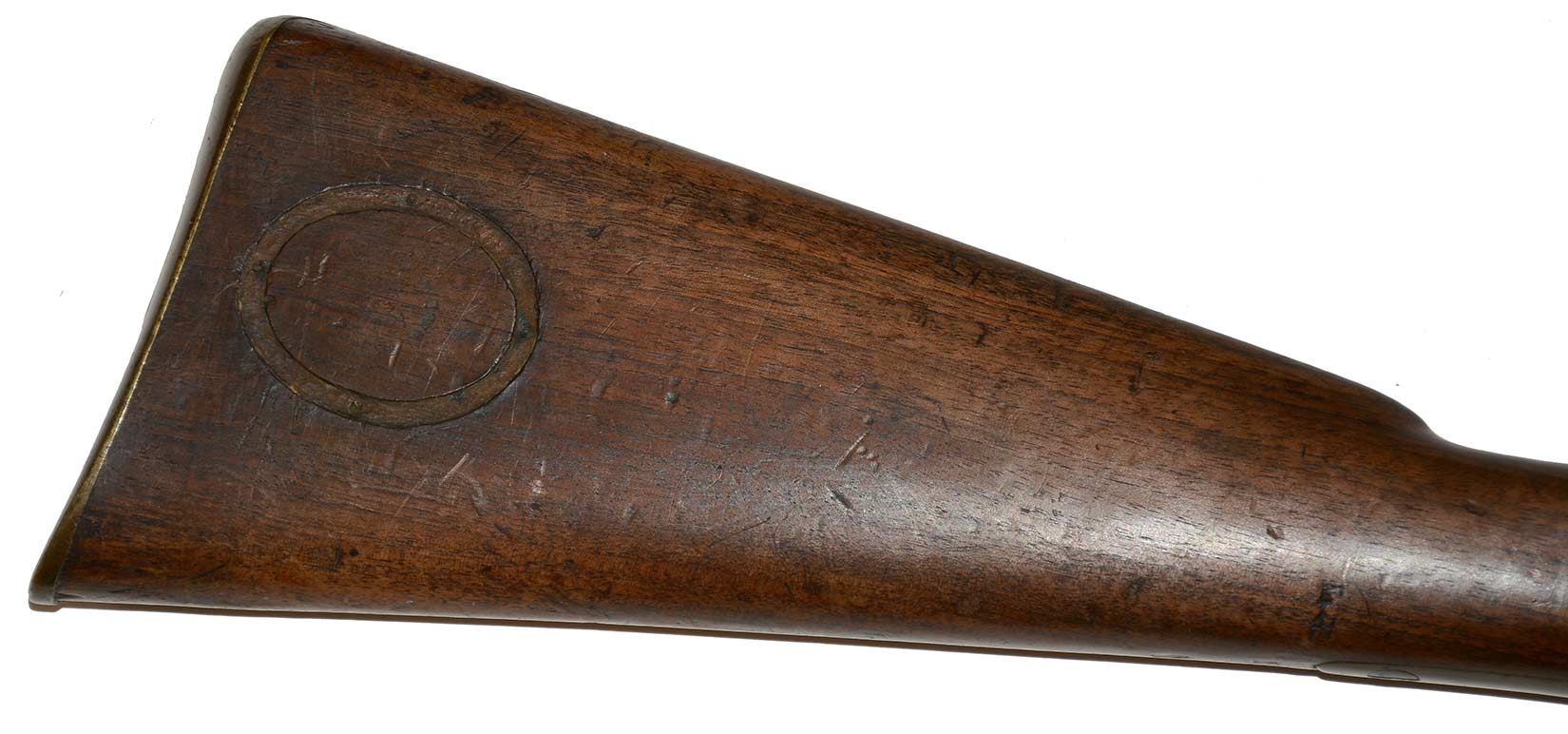
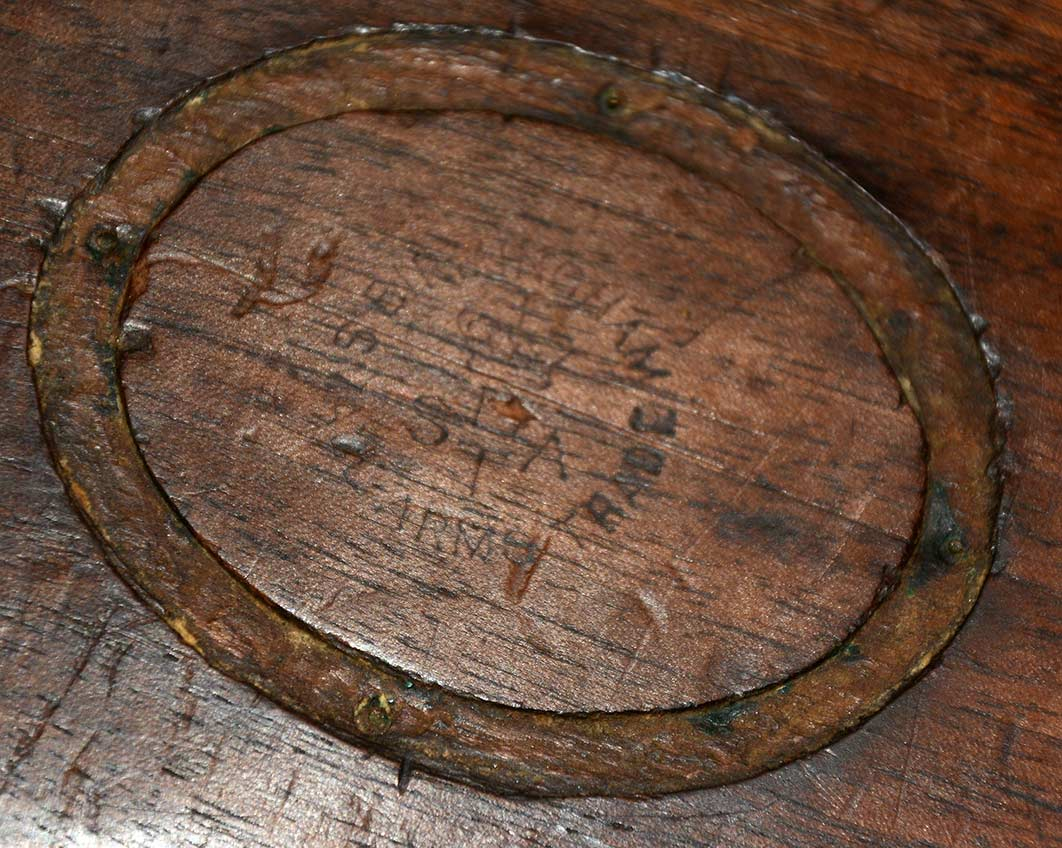
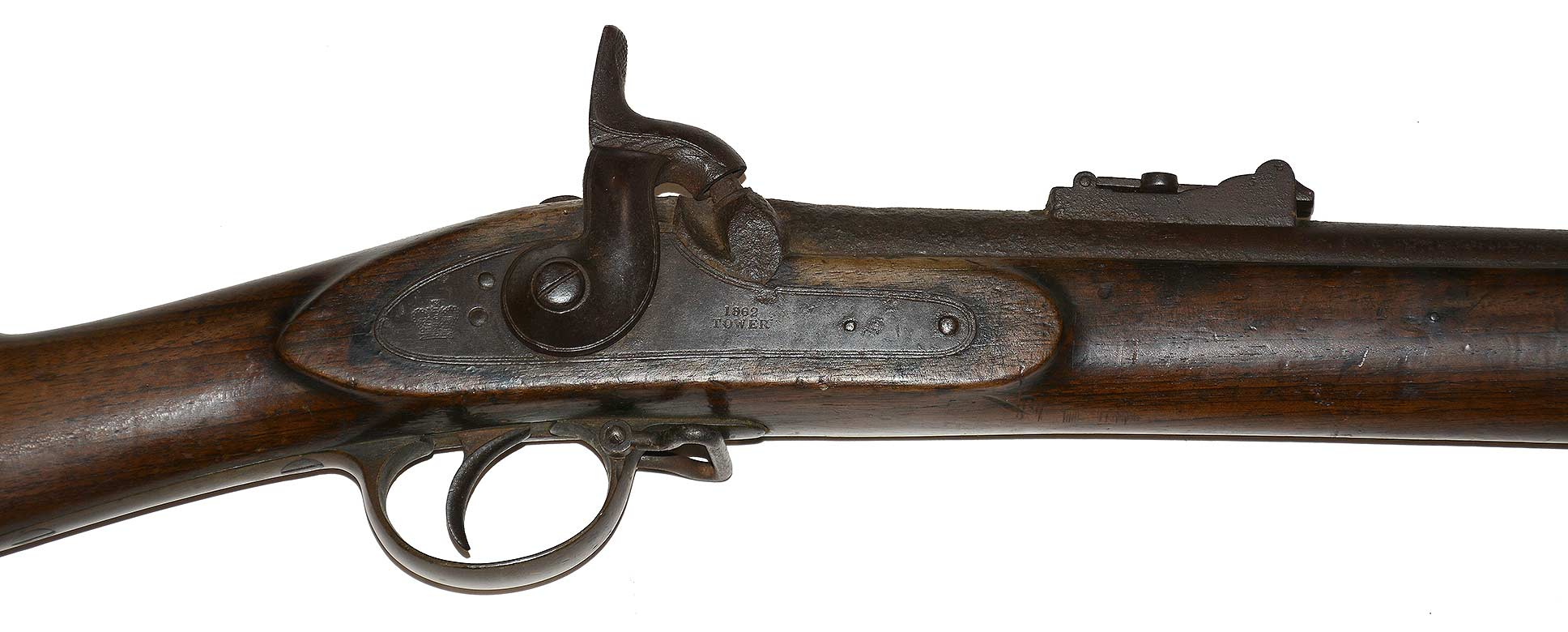

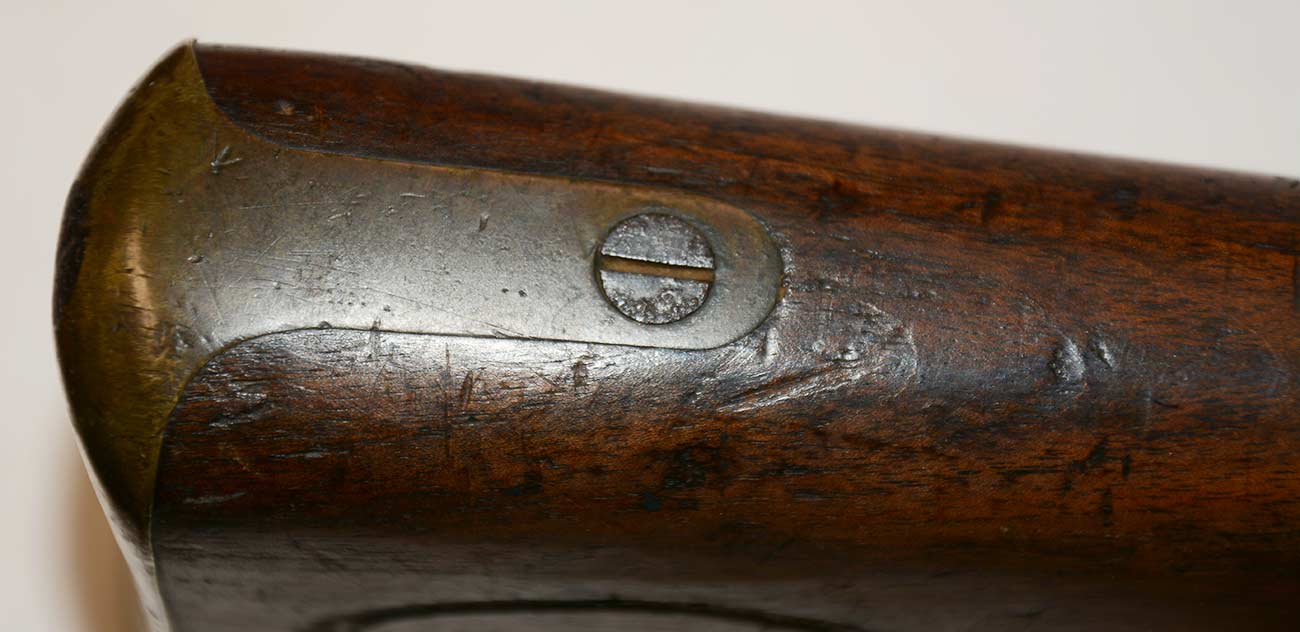
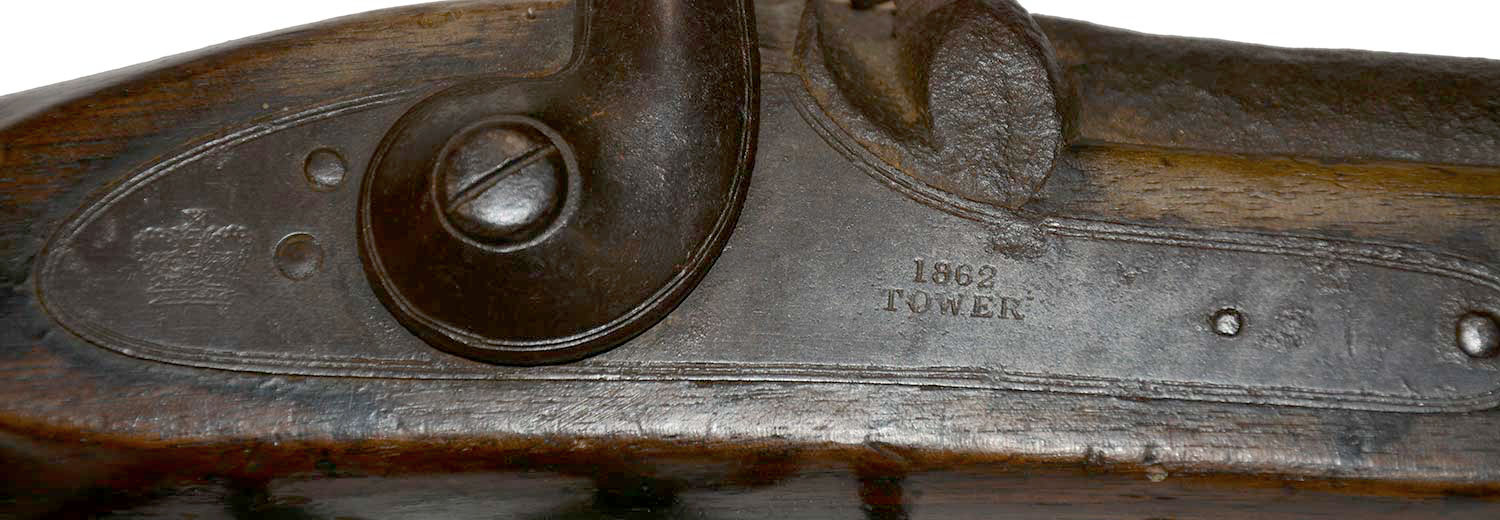
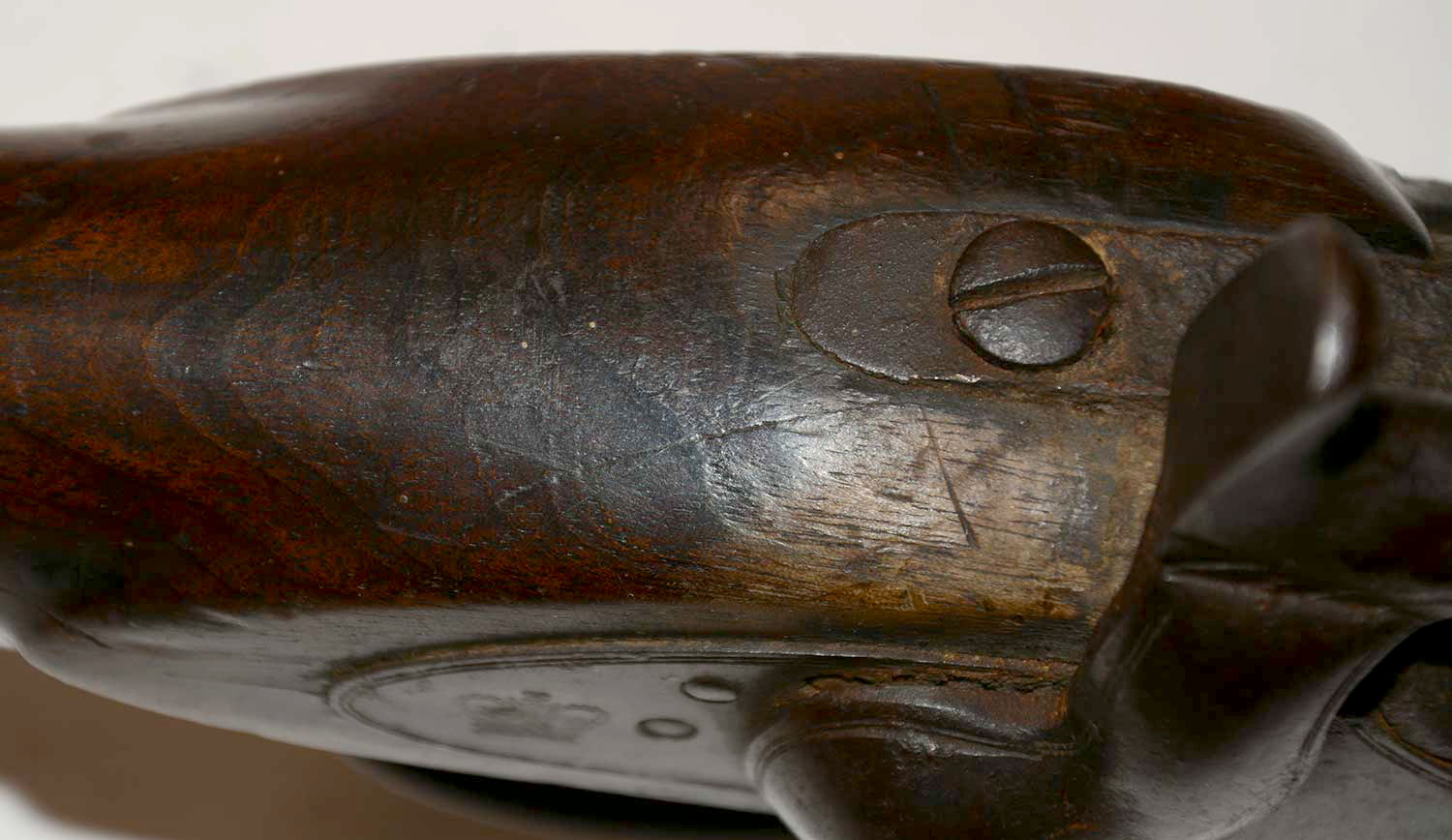

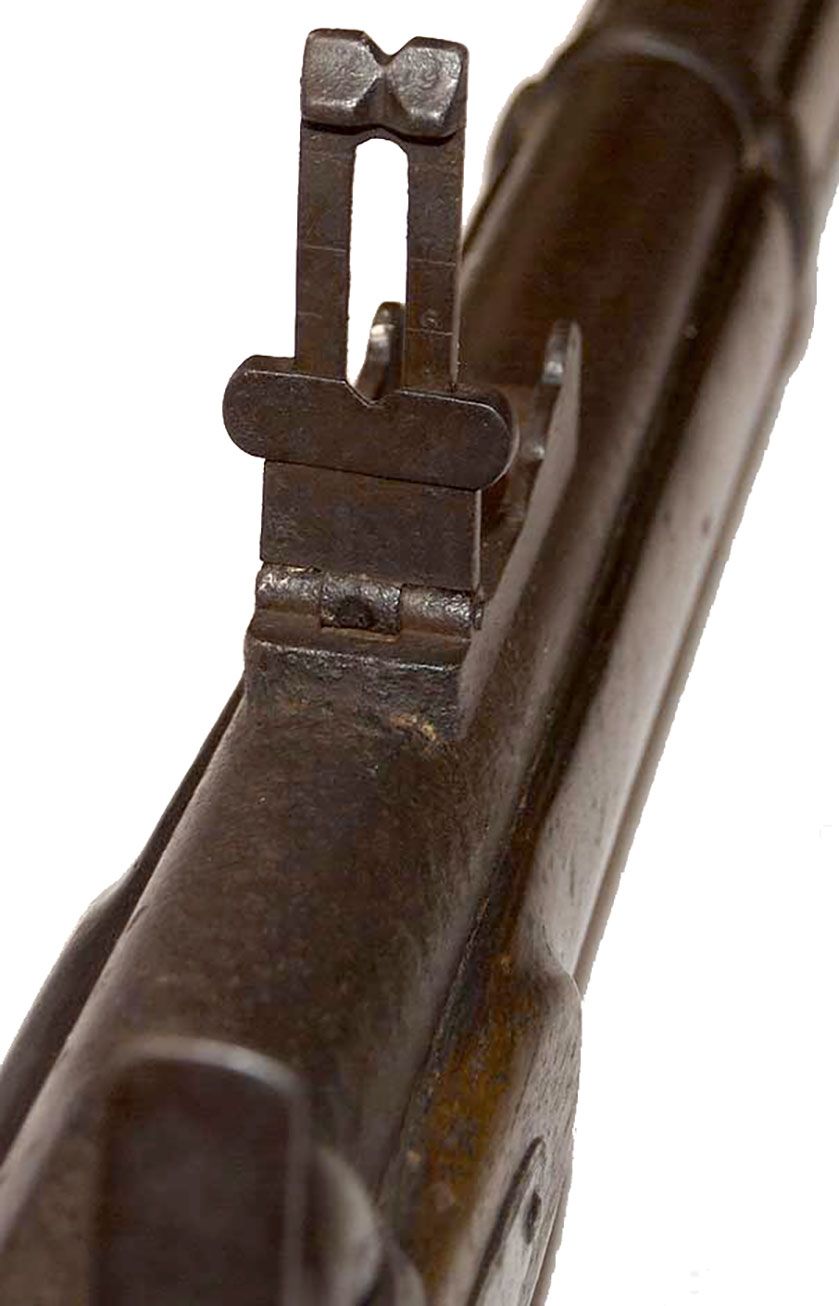

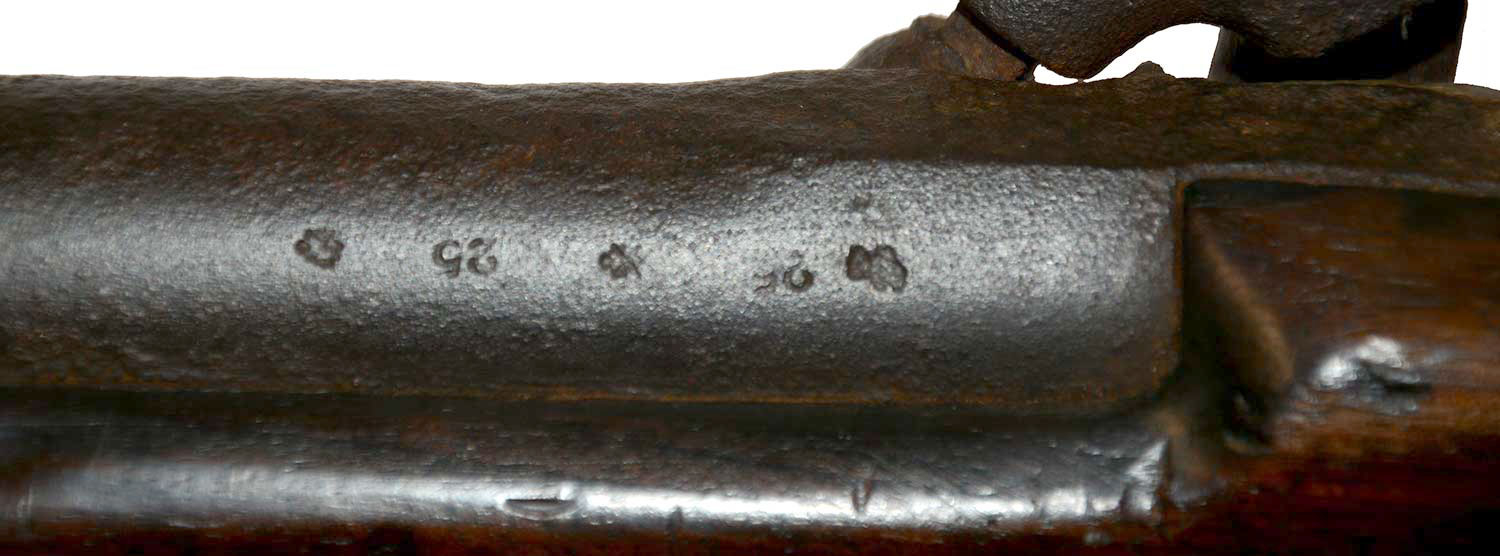
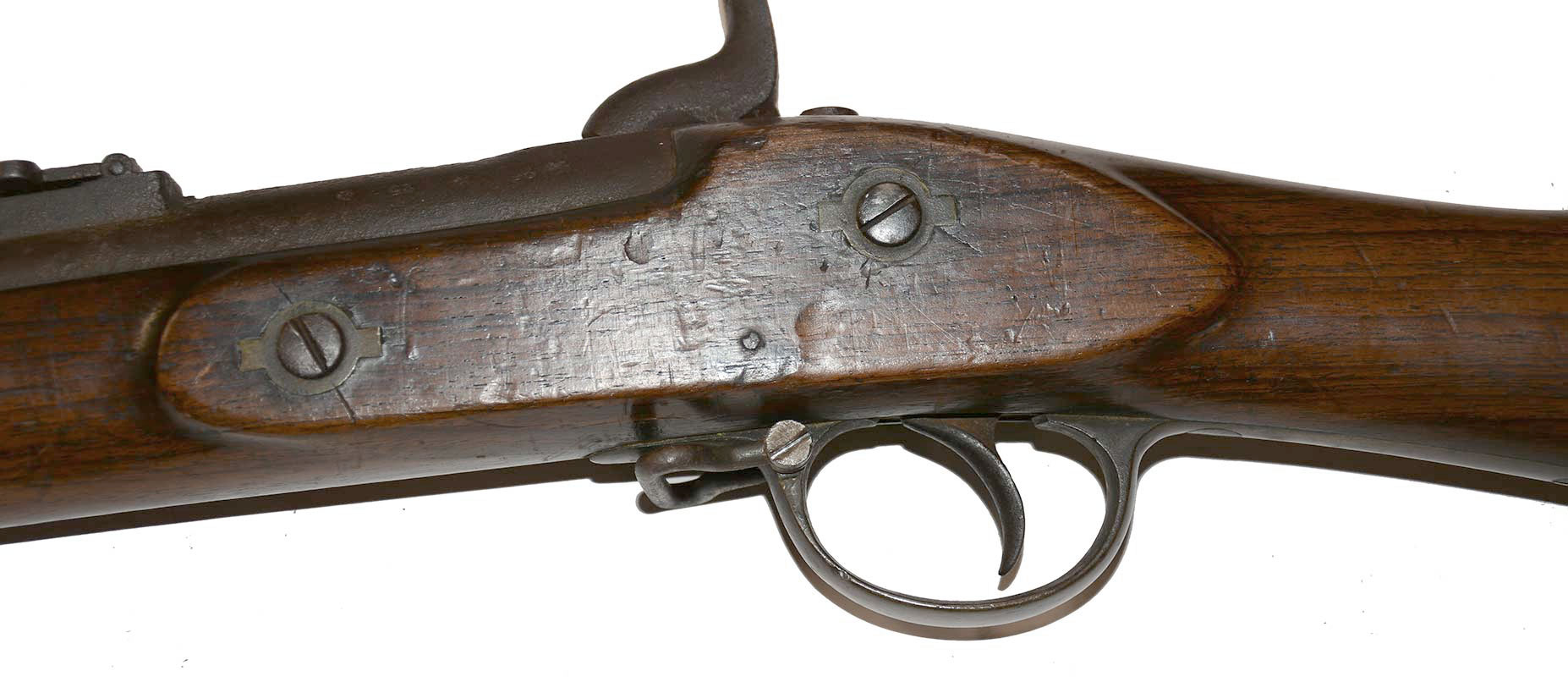
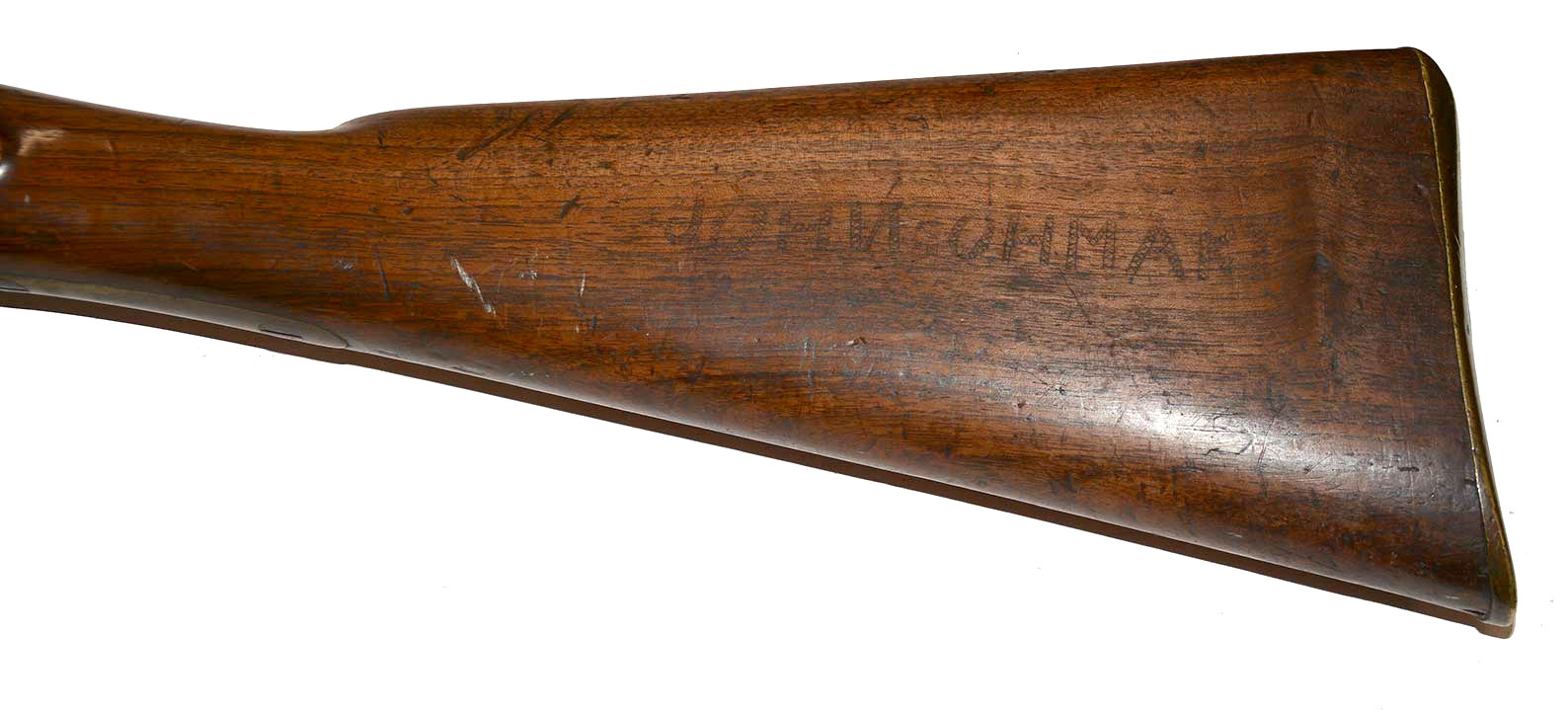
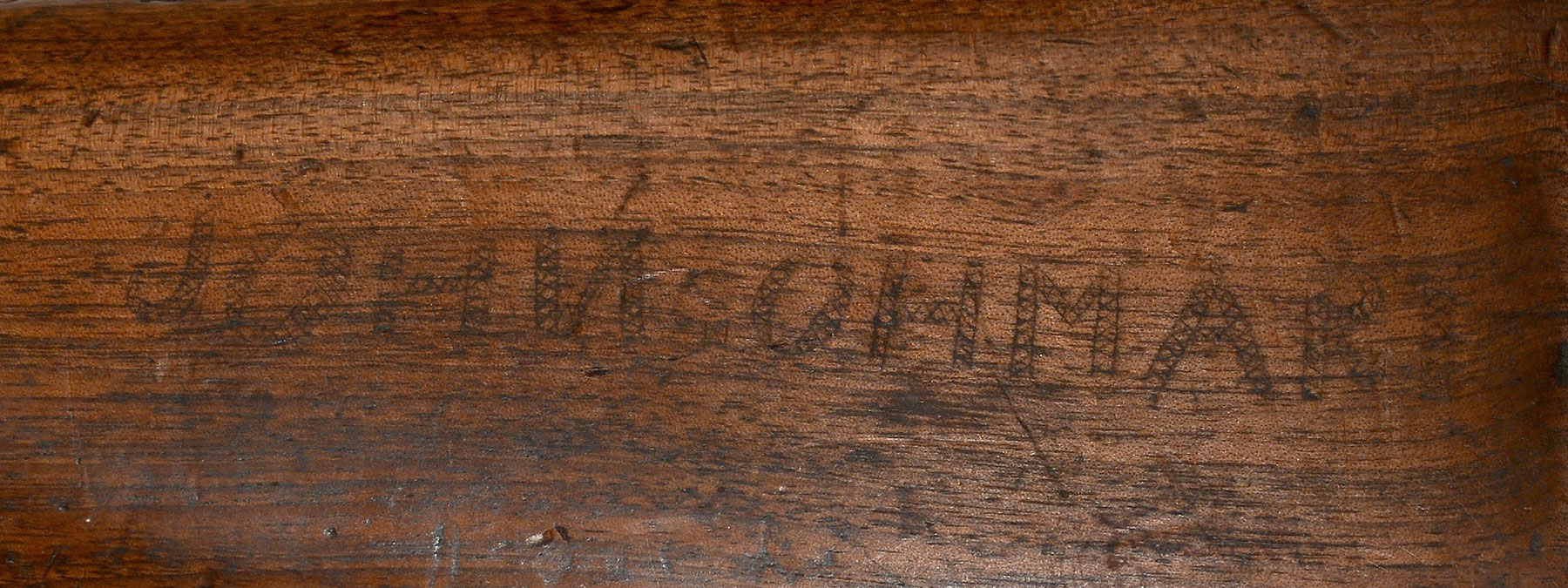

$3,950.00 SOLD
Quantity Available: None
Item Code: 534-36
This British Pattern 1853 Enfield Rifle Musket surfaced recently in Ohio and bears the typical signs of Confederate usage in the bleaching of the wood and pitting of the breech from their use of British “high pressure” percussion caps, but also shows the captor’s name nicely carved on the stock, and the spot where a plaque was once mounted giving the history of the gun, perhaps from displaying it at the disabled volunteer soldiers’ home where the veteran resided in in the last couple decades of his life.
Confederate used long arms frequently show bleaching or burnout to the wood behind the nipple and next to the hammer, and pitting on the breech, which used to be attributed to neglect during the war or prolonged postwar use in civilian life, but is now understood to result from the use of highly corrosive imported British “high pressure” percussion caps (so named from the pressure used in manufacture.) These were introduced in April 1861 and had more explosive power and stronger flame to ensure ignition of combustible cartridges, but were so powerful as to draw complaints among the British volunteer forces and be withdrawn from general British issue in August 1864. This one shows not only the typical bleaching of the wood, but also the pitting on the breech typical of guns used with these caps.
The rifle is complete, all original, and rates good for condition. The wood has good color and surface with minor handling dings. The fit to the metal is good. The edges of the lock apron and counterpane are good. The fore stock shows some shallow wear to edge of the barrel channel between the middle and upper bands on the right. The left shows the same slight wear between the upper bands, but a long, narrow chip off the barrel channel between the lower two bands. The barrel is brown, with light crustiness forward from the rear sight and pitting to the sides of the sight and on the breech, the face of the bolster and a slight spot on the upper edge of the lock plate just under the bolster, indicating some at least is due to the corrosive effects of percussion caps. The barrel proofs on the left breech are legible, showing the 25/25 bore size indicating .577 caliber. The bands show pitting. Both sights are in place. The front sight has some wear to the blade. The rear sight is complete with ladder and bar. The ramrod is in place, as are the sling swivels. The lock plate markings are very good: a crown to the rear of the hammer and 1862/ TOWER forward. The brass elements have a nice, untouched, aged tone. The right butt flat shows a recessed oval groove cut around the stamped Birmingham Small Arms Trade cartouche that features a crown over B/S/A/T with BIRMINGHAM / SMALL ARMS TRADE around it. The groove shows what appear to be four spots from tacks securing a plaque covering that stamping.
The plaque was perhaps silver and scrapped or removed by the family before disposing of an heirloom, but the soldier’s name is clearly written in cross-hatched block letters: “JOHN OHMART” with a folky reversed “N,” a period between first and last names, both with the “O” slightly tilted. No Confederates show up as candidates, and there are just two Union soldiers named John Ohmart, one of whom was from Ohio, served in the 71st Ohio, and lived in Ohio until the end of his life. The regiment was organized at Troy, Ohio, and mustered into service for three years on 2/1/1862, with most of the men coming from Miami, Auglaize, and Mercer Counties. Ohmart had enlisted at age 24 on 10/27/61 and was mustered into Company C. Born in July 1837, he is picked up by the 1860 census at age 22 living on a farm in Elizabeth, Miami County, Ohio, with his father and siblings. The regiment had a rather checkered early career. They were ordered to Kentucky on 2/10/62 and took part in the occupation of Columbus, KY, and expedition to Yellow Creek, MS, before moving to Pittsburg Landing, where they were engaged in the Battle of Shiloh on April 6 and 7, fighting perhaps as well as could be expected from such new troops and losing 130 men, but with their Colonel accused of fleeing the field.
They were subsequently assigned to garrison duty in two detachments, one at Fort Donelson and one at Clarksville, TN. Those at Clarksville were attacked on 8/17/62 and were surrendered by their officers, who deemed themselves hopelessly outnumbered, but subsequently found themselves dismissed from the service for doing so: those at Donelson repelled the same Confederate force just eight days later. The reunited regiment then did garrison duty at Forts Donelson and Henry until August 1863 and then guarded the lines of the Louisville and Nashville Railroad, with expeditions from headquarters at Gallatin to Carthage in October 1863, to the Cumberland Mountains in early 1864, both protecting Union lines of communication and supply, and stifling Confederate recruiting, raids by partisans, etc.
In July 1864 the regiment was ordered to join Sherman’s army in front of Atlanta as part of the 20th Corps, and was transferred to the 4th Corps in August. Ohmart served with the regiment until discharge on Dec. 6 at Nashville. Dyer lists the regiment’s official service during this period as follows: “Atlanta Campaign July 31-September 8. Siege of Atlanta July 31-August 25. Flank movement on Jonesboro August 25–30. Battle of Jonesboro August 31-September 1. Operations against Hood in northern Georgia and northern Alabama September 29-November 3. At Athens, Ga., October 31-November 23. March to Columbia, Tenn., November 23–24. Nashville Campaign November–December. Columbia, Duck River, November 24–27. Battle of Franklin November 30.” Ohmart’s Company C is specifically mentioned in official reports as one of four companies forming the brigade’s skirmish line on Sept. 2, helping to drive enemy skirmishers for half a mile, taking a portion of their rifle pits and field works before exhausting all its ammunition.
Ohmart returned to Ohio after discharge and picked up work again as a farm laborer, living still in Elizabeth with a Priscilla Ohmart and her daughter in 1870, perhaps a sister or sister-in-law. He seems to have Mrs. Mahala Deweese in Miami County 3/13/1879, and in 1880, still working as a farm laborer, was living with his wife, five-month old son and three step-children in Casstown. His health must have suffered a downturn within few years: he filed for an invalid pension in 1888, and was a resident of a Soldiers’ Home in Jefferson by 1890. By 1900 he resided in a similar soldiers’ home in Dayton, where he died in 1909 and was buried there in the national cemetery.
The rifle is most likely a souvenir from his 1864 service, marked to make clear his ownership while returning or shipping it home, and then fitted with a plaque to record its story. The bore is dirty but has good rifling and the action strong and works well, but it should be left as it is, a unique relic. The rifle displays very nicely as a real veteran, both Confederate used and Union war trophy, and a memento of Ohmart’s service. [sr] [ph:L]
DISCLAIMER: All firearms are sold as collector's items only - we do not accept responsibility as to the shooting safety or reliability of any antique firearm. All firearms are described as accurately as possible, given the restraints of a catalog listing length. We want satisfied customers & often "under" describe the weapons. Any city or state regulations regarding owning antique firearms are the responsibility of the purchaser. All firearms are "mechanically perfect" unless noted, but again, are NOT warranted as safe to fire!
~~~~~~~~~~~~~~~~~~~~~~~~~~~~~~~~~~~
THIS ITEM, AS WITH ALL OTHER ITEMS AVAILABLE ON OUR WEB SITE,
MAY BE PURCHASED THROUGH OUR LAYAWAY PROGRAM.
CLICK HERE FOR OUR POLICIES AND TERMS.
THANK YOU!
Inquire About CONFEDERATE USED 71st OHIO SOLDIER’S “BRING BACK” ENFIELD
Most Popular
Historical Firearms Stolen From The National Civil War Museum In Harrisburg, Pa »
Theft From Gravesite Of Gen. John Reynolds »
Selection Of Unframed Prints By Don Troiani »
Fine Condition Brass Infantry Bugle Insignia »
featured item
ARMED CONFEDERATE LIEUTENANT COLONEL
This uncased eighth-plate tintype is a very clear studio view of a Confederate lieutenant colonel wear frock coat, narrow brim hat, gauntlets and tall boots. He has tilted his hat slightly to one side and wears a sort of tight-lipped smile. His… (1138-2029). Learn More »
site search
Upcoming Events
The shop is currently closed so that we may conduct our annual inventory. We are available by phone… Learn More »


